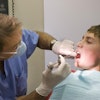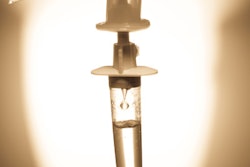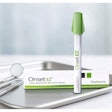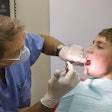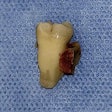
Use of intravenous sedation in dental patients is on the rise because of accompanying medical conditions and patient safety and comfort considerations. Now a new Japanese study conducted at Tokyo Dental College has found that midazolam plus propofol was the chosen agent for treatment in most cases (Bulletin of Tokyo Dental College, Vol. 55:3, pp. 157-162).
The Japanese Dental Society of Anesthesiology has published guidelines on the appropriate method of use and dosage for intravenous sedation agents. The guidelines state that agents should ideally exert sedative, hypnotic, anxiolytic, amnestic, and other central depressant effects with rapid awakening, antiemetic actions, and few side effects. They did not, however, discuss choice of agent or dosage in consideration of accompanying conditions.
This study, conducted at the department of dental anesthesiology of Tokyo Dental College Chiba Hospital between 2010 and 2011, considered the choice of sedative agent and the dosage on the basis of accompanying diseases or conditions.
The study included 2336 patients who were divided into various categories, including medically compromised patients (with hypertension, bronchial asthma, or diabetes), those who needed oral surgery such as extraction, patients with cerebral palsy without mental retardation, patients with mental retardation or autism, those with mental disorders such as schizophrenia, and patients who had dental phobia with/without gag reflex.
The sedative agents included midazolam, midazolam plus propofol, propofol alone, or others, which basically included benzodiazepines.
“It is important for clinicians to consider the patient's safety and comfort.”
The combination of midazolam plus propofol was used in approximately 63% to 79% of patients in all groups, except the medically compromised group. Midazolam was used in about 47% of the cases in the medically compromised group. About 32% of the patients in the mental retardation or autism group received propofol, while about 12% of the patients who needed oral surgery were given other agents.
Midazolam was given as a single or repetitive bolus injection, the researchers found. While propofol alone was administrated by infusion in most cases, it was also given as a repetitive bolus injection in a small number of cases. In the case of midazolam plus propofol, bolus injection of midazolam was followed by infusion or repetitive bolus injection of propofol.
As for patient category and administered agent, the study authors reported that the number of patients who received midazolam in the medically compromised group was almost the same as the number who received midazolam plus propofol. In all the rest of the groups, however, midazolam plus propofol was chosen the most.
When it came to dosage, patients received 0.05 mg/kg to 0.06 mg/kg of midazolam with no significant difference, except for in the patient group who had cerebral palsy without mental retardation. When midazolam plus propofol was administered, the dose of midazolam showed no variation among groups.
The dose of propofol tended to be lower in the patient group who had medical conditions and also the cerebral palsy group. When propofol alone was used, the dose tended to be lower in the medically compromised group than in the other groups.
Midazolam plus propofol was chosen for most patients presumably because midazolam has strong amnesic effects and propofol compensates for difficulties in controlling depth of sedation, the study authors noted. If midazolam is given repetitively, the patient is at risk for respiratory and circulatory depression. Also, deep sedation is required in anxious patients, and propofol only has a weak effect.
The medically compromised group received conscious sedation to relieve mental stress, while deep sedation was more frequently used in other groups, the authors reported.
"Events including intraoperative respiratory depression and reduction in SpO2 [peripheral capillary oxygen saturation] were observed in patients who underwent deep sedation," they wrote. "However, these events were improved by elevation of the lower jaw of oxygen administration, and no patient required more high-level treatment."
The authors noted that the number of patients who are given intravenous sedation is increasing every year in their clinic, and they will be conducting more studies that will cover sedation level and perioperative complications.
Various factors are involved in the choice of sedation agents, and it is important for clinicians to consider the patient's safety and comfort and also ensure that dental treatment is managed safely, the study authors concluded.



